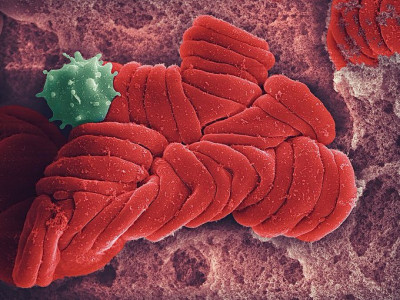Nanoparticles are minuscule particles with dimensions typically ranging from 1 to 100 nanometers. Their small size grants them unique physical and chemical properties, making them indispensable in various fields. In medicine, drug delivery systems employ nanoparticles to target specific cells, reducing side effects. In electronics, nanoparticles enhance the performance of semiconductors and catalytic materials. In environmental science, they aid in water purification and pollution control. Nanoparticles are also vital in materials science, as they can reinforce composites, enhancing strength and durability. Moreover, their optical properties enable innovative applications in imaging and sensors. However, the exceptional reactivity and potential toxicity of some nanoparticles raise concerns for safety and environmental impact. Their development demands a balance between harnessing their capabilities and understanding their potential risks, which is a crucial aspect of ongoing research in nanotechnology [1].
23 Oct 2023
Nanoparticles (NPs) can be categorized into several classes based on their composition and structure. Metallic nanoparticles (e.g., gold, silver) are used in imaging, drug delivery, and antimicrobial applications. Polymeric nanoparticles are formed from biodegradable polymers like PLGA and are often employed in drug delivery systems due to their controlled release properties. Lipid-based nanoparticles, including liposomes and solid lipid nanoparticles, are widely used for encapsulating drugs and enhancing bioavailability. Inorganic nanoparticles (e.g., silica, quantum dots) are used in diagnostics and biosensing. Lastly, carbon-based nanoparticles (e.g., fullerenes, graphene) have applications in drug delivery, imaging, and electronics.
26 Aug 2024
Encyclopedia now accepts Field Guides! Showcase plants, animals, fungi, and more from specific regions with high-quality images for easy identification. No length limits—just include at least five images.
Encyclopedia Editorial Office
24 Sep 2024
Under 2,500x magnification, a detailed view reveals red blood cells trapped within a fibrin mesh, forming a blood clot. The fibrin strands, appearing as a delicate web, entangle the red blood cells, immobilizing them to prevent excessive bleeding. This complex structure is essential for hemostasis, where the body stops blood loss following injury. The fibrin mesh, a product of the coagulation cascade, ensures stability and strength in the developing clot. The captured image underscores the intricate balance of cellular and molecular interactions in blood clot formation, highlighting the vital role of fibrin in maintaining vascular integrity and promoting healing.
08 Jul 2024
A microscopic view of a mouse embryo reveals early anatomical features like the developing neural tube and beating heart. Clusters of cells destined to form organs and tissues undergo rapid growth and differentiation. Vascular networks begin to emerge, essential for nutrient exchange, highlighting the intricate stages of embryonic development.
05 Jul 2024
Biological barriers to precision medicine applications significantly challenge its effectiveness. Genetic variability among individuals leads to differing responses to treatments, making it difficult to predict outcomes. Additionally, the complexity of diseases, especially those involving multiple genes and environmental factors, complicates the development of targeted therapies. Epigenetic modifications and gene-environment interactions further obscure the relationship between genotype and phenotype, limiting the precision of treatments. Moreover, the tumor microenvironment in cancer and the blood-brain barrier in neurological diseases pose significant obstacles to drug delivery. These barriers underscore the need for continued research and innovation to overcome the limitations of precision medicine.
26 Aug 2024
 Encyclopedia
Encyclopedia






